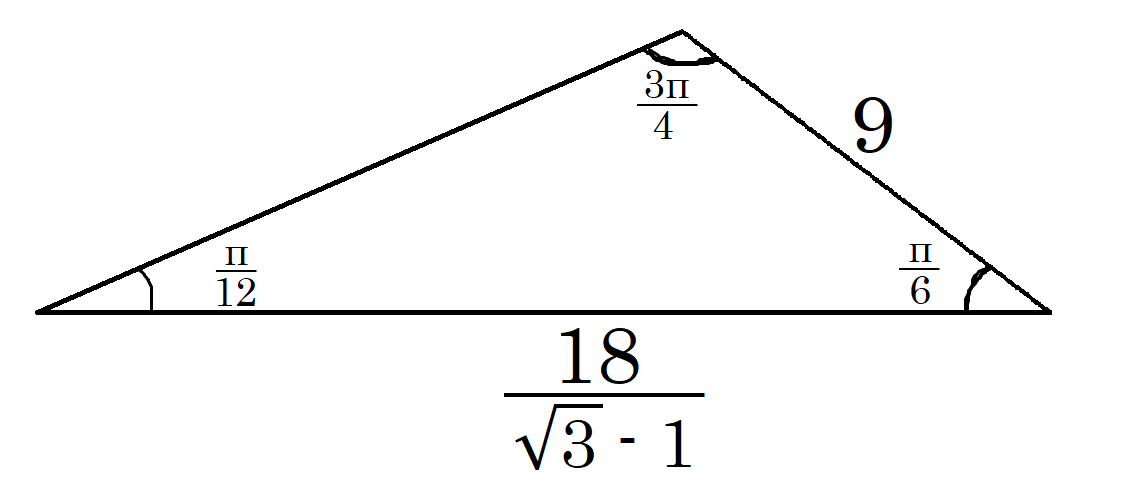A triangle has two corners with angles of # (3 pi ) / 4 # and # ( pi )/ 6 #. If one side of the triangle has a length of #9 #, what is the largest possible area of the triangle?
2 Answers
Explanation:
First, we need to find the third angle:
#A + B + C = pi#
#(3pi)/4 + pi/6 + c = pi#
#(9pi)/12 + (2pi)/12 + c = pi#
#c = pi/12#
So our three angles are
To get the largest possible area for the triangle, we want to make
And the smallest side is always opposite of the smallest angle. The relation between side and angle is given through the law of sines:
#a/sinA = b/sinB = c/sinC#
If we assume that the side with length
#a/sinA = 9/sin(pi/12) = 9/((sqrt6-sqrt2)/4) = 36/(sqrt6-sqrt2)#
Now that we know this constant, we know that all of the other sides and angles must also create this same constant. So, since we have the angles for the other two sides, we can go ahead and solve for one of the other two sides, like this:
#b/sin((3pi)/4) = 36/(sqrt6-sqrt2)#
#b/(sqrt2/2) = 36/(sqrt6-sqrt2)#
#bsqrt2 = 36/(sqrt6-sqrt2)#
#b = 36/(sqrt2(sqrt6-sqrt2)) = 36/(2(sqrt3-1)) = 18/(sqrt3-1)#
~~~~~~~~~~~~~~~~~~~~~~~~~~~~~~~~~~~~~~~~~~~~~~~~~
Now, we know two sides, and the angle connecting them. Just for reference, this is what our triangle looks like (not to scale):

Given two sides and the angle between them, we can use this formula to find the area of the triangle:
#A_Delta = 1/2ab sinC#
#A_Delta = 1/2(9)(18/(sqrt3-1))sin(pi/6)#
#A_Delta = 1/2(9)(18/(sqrt3-1))(1/2)#
#A_Delta = 162/(4(sqrt3-1))#
#A_Delta = 81/(2(sqrt3-1)) = 55.324#
Since we made
Final Answer
Largest possible area of the triangle
Explanation:
Third angle
To get the largest area, length 9 should correspond to smallest angle C =
Largest possible area of the triangle

